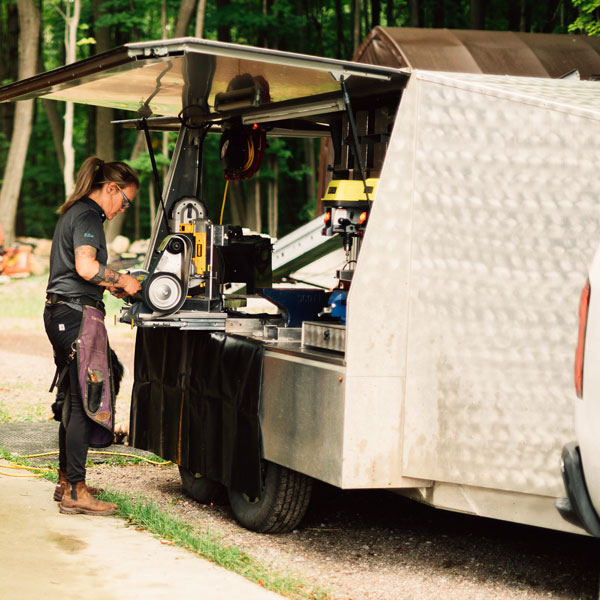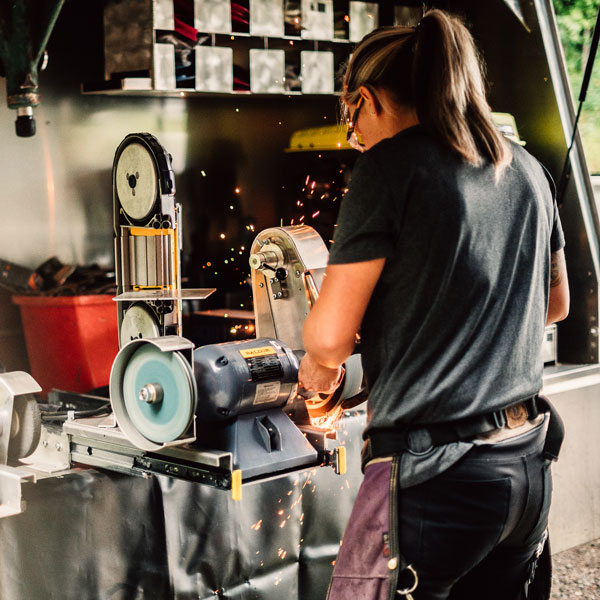
FAQ’s
Does my horse need shoes or can he/she be barefoot?
Shoeing is an important topic, and I could write about this for pages! Firstly the term ‘barefoot’ can be completely misused and is often used in marketing a style of trimming. I often leave horses without shoes if the situation allows, I consider them to be barefoot. I caution against someone who states that shoeing is never in a horse’s best interest. A properly trimmed hoof should be medio laterally balanced, frogs trimmed as not to hold any excess debris and flares dressed.
If a horse wears down more foot than it grows, then the foot needs to be protected by shoes. Shoeing is more technical as many horses are shod for corrective reasons, traction, protection of hoof capsule, stability, weight distribution, the list goes on!
How often should my horse be trimmed/shod?
My average visit for horses is 5 to 6 weeks. However, there are corrective cases that need to be done sooner. Hooves vary in their needs and growth depending on diet, environment, age, etc. For example, young horses grow more hoof than older horses; horses under one year grow about twice as fast as a horse over the age of 12.
The average hoof grows 1/4 to 3/8 inch per month. Since the average hoof is 3 to 4 inches in length, the horse grows a new hoof every year.
Does hot shoeing and nailing shoes hurt my horse?
No! Hot shoeing is my preferred method, as it offers a better shoe fit, seals the tubules, kills bacteria, and toughens the hoof tissue that is seared, creating a perfect union between the shoe and foot. I also prefer to shoe with clips, and burning the shoe on offers a better clip fit. Don’t let the smoke scare you; this does not hurt the horse!
Nailing on a shoe also does not hurt the horse, when done correctly. A properly shaped and placed shoe should line the nails up to enter the white line and be driven at the angle of the hoof wall.
Does my horse need a hoof based supplement?
Supplementation varies from horse to horse. My first recommendation for the horse owner is to seek advice from their local feed store and utilize their knowledge of the feeds they sell. Feeds and supplements vary greatly. However, I strongly recommend following the manufacturer’s instructions on feeding. Remember to follow the manufacturer’s recommended feeding instructions based on your horse’s weight. Therefore the horse is not getting the correct amount of nutrition from the feed. If your horse is on a complete feed, base the amount fed on your horse’s accurate weight, etc.
If hooves are of poor quality and the horse is already on a proper diet and feed, then a hoof based supplement can be added. I carry hoof power from my supplier and a Purina product called BMZ is also available from the local feed stores in my area.
It is very hard to decipher what a horse is potentially lacking in his or her diet. Blood work, hair analysis and hay samples all offer some information in deciphering what a horse is potentially lacking. However so much depends on the time blood is taken or what part of the field the hay sample was analysed. A recommended site is feedxl.com, they can help determine a full nutrient analysis that is relatively inexpensive.
Hoof Supplements Key Ingredients:
Growth
- Bioten
- Minerals (e.g. copper,zinc)
- Essential Amino acids (e.g. methionine,lysine)
- Fatty acids
- Collagen/gelatin
- Phosphatidylcholine
- Lecithin
- Sulfur
Circulation
- Arginine
- Citrulline
- Antioxidants
- Herbs (e.g. bilberry)
Laminar Support
- Omega 3 fatty acids (flax,fish oil)
- Amylase (digestive enzyme)
- Herbs (e.g. yucca, turmeric, others)
- MSM
- Antioxidants
How do I choose a farrier?
Choosing a farrier can be a challenge and if you have one that is doing a good job, keep them! Canada does not have its own governing body for farriers, and unfortunately, there are a lot of misconceptions.
Always try to look for someone who is active in farrier continuing education. Preferably a hoof care professional that is certified is preferred (CF or CJF), and a member of the farriers association of your area.
The AFA, IAPF and OFA have a find a farrier section. That is an excellent place to start; they often list credentials, etc. In my opinion, a farrier always has the opportunity to learn and educate themselves and should be an active participant in furthering their education.












